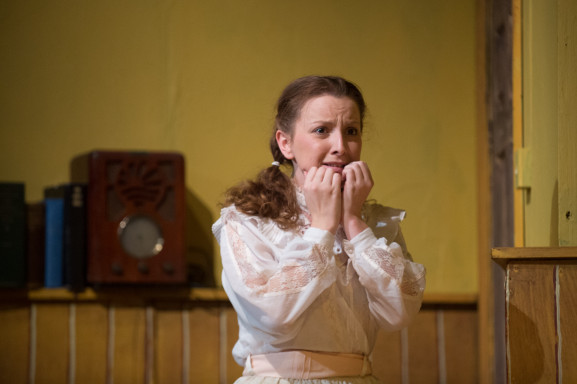'A SHOW WITH VOLCANIC POWER' - The Guardian
Valentine's Day. 1900. A group of teenage boarding school girls visit the "Hanging Rock" for a picnic.
In baking outback heat (and in defiance of warnings from their headmistress) four of the group break free to climb the rock face. Not all of them return.
This is the chilling premise of Joan Lindsay's classic Australian mystery novel, turned into a cult film by Peter Weir in 1975. Tom Wright's brilliant 2016 stage adaptation tells the terrifying story with just five actors. We see them first as modern girls in a private school. But, as the girls delve deeper into the battle between humanity and the natural world, they bring all the story's characters to startling life.
The result? A visceral telling of the classic mystery story: and a thrilling evening of fast-paced, high-voltage theatre.
“A show with volcanic power . . . This retelling of the Joan Lindsay cult classic proves the book’s theme remains relevant – and will terrify the pants off you” - The Guardian
"Emotion, violence and meaning bubble up like magma . . . an evocative adaptation that finds horror not in nature, but in the civilising class". - The Stage
The all-female cast was convincingly possessed by its own story. Nicol Cortese was compelling as British expat Mrs Appleyard, battling to impose an Eden-like order of poetry and mathematics in the midst of a primeval "anti-Eden" where nature "obliterates you". But when three girls and a teacher vanish on an outing at Hanging Rock (formed by an ancient valcanic eruption), the "eternal fire" that lurks beneath the surface of Australia blazes up, inching towards her bit by psychologlcally remorseless bit.
Multiple roles for the other members of the cast posed significant challenges, to which they were most definitely equal. Katie-Anne Campbell was eminently believable as Michael, a young Englishman fresh off the boat who sets out to investigate the disappearances, but succumbs in his turn to the disorientation that seemed to overtake the vanished party. Tina Shinkwin's first Criterion outing, as both picnicker Edith and, later, the orphan Sara, showed promise. Sara's pitiful mental disintegration in the picnic's aftermath has a perfect mirror to that of her bullying nemesis Mrs Appleyard.
Eerie outback wildlife sound effects, and P.J. Harvey's mesmeric music, added to the sense that spelling and algebra were ultimately likely to be of little use against this antediluvian backdrop puncturing the increasingly thin-seeming veneer of civilisation. With the mystery unresolved, things are not under our control, and we are not ourselves. Mrs Appleyard's final exhortation to the audience, sprinting 'towards the abyss - as we all should" - seemed a per-fectly credible option, in the circumstances.












